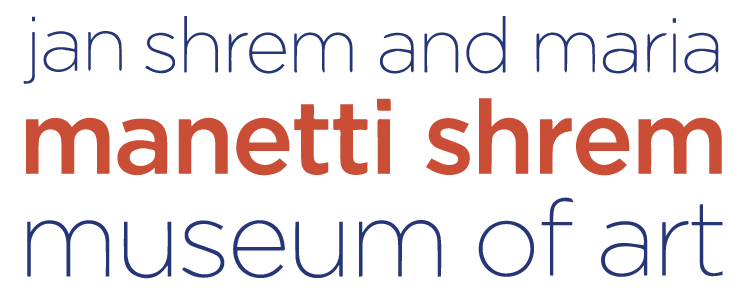
Unity in Diversity, 2003
Failures of Democracy
Nalini Malani’s Unity in Diversity was created in response to riots in the province of Gujarat, India, in 2002, where approximately 2,000 Muslims — mostly women — died violently. The title references the concept of religious harmony in India and the country’s slogan of post-Independence democratic ideals. In the work, Malani points to how the reality of democracy often fails to live up to hard-won principles.
The video begins with Indian artist Raja Ravi Varma’s (1848–1906) allegorical painting Galaxy of Musicians, 1889 which features 11 female musicians dressed in the different costumes of India, embodying the concept of unity in diversity. The image is interrupted by gunshots, and eventually overlaid with footage from a laparoscopic camera during a surgery. Malani’s juxtaposition of peaceful and surgical imagery quite literally shows the body politic torn apart.
The photos surrounding the projection are from the life of Gandhi, and the environment evokes a middle-class Indian home of the post-Independence period when the concept of unity in diversity seemed most achievable.
We are moving inexorably towards [George Orwell’s] 1984, and that’s the sad part of it. India in the first decade since Independence and what we go through today, there is a big difference. And I don’t know how we are going to come out of it and how much we are going to suffer through this period. It’s a very sad moment. But we have to go on, as artists. What do you do in dark times? You continue to work in dark times, as [Bertolt] Brecht says.”
–Nalini Malani, interview, Serralves Museum of Contemporary Art, 2021
Learn more about the 2002 riots and killings in Gujarat, India
On February 27, 2002, a passenger train made a stop at the Godhra station, in eastern Gujarat, India. The train was carrying Hindu pilgrims — many of whom were supporters of the Vishwa Hindu Parishad (VHP or the World Hindu Council) tied to the right-wing Hindu nationalist organization RSS (Rashtriya Swayamsevak Sangh) — returning from the city of Ayodhya where they had been helping to lay the plinth of a future Hindu temple dedicated to Rama, avatar of Vishnu. The temple was to be built at the disputed site where the mosque Babri Masjid had once stood, razed to the ground by RSS volunteers in 1992. While harassing Muslim travelers, the passengers picked a fight with locals that turned deadly. Coaches were torched and at least 58 people died from suffocation and burns.
Godhra fueled the outrage and call for retribution that led directly to the violence against the Muslim community erupting across the state of Gujarat. Clashes between Hindus, Muslims and tribal groups went on for over three months. At least 2,000 people were killed, 250,000 injured, and nearly 150,000 displaced. The bloodshed would eventually push most of Gujarat’s Muslim population into overcrowded, squalid urban quarters.
Unlike communal riots of the past, some of the carnage this time, including rape, murder, arson and looting, was planned and directed by RSS activists, who formed vigilante squads armed with clubs, guns, swords, and gasoline — implicating the chief minister Narendra Modi (the current Indian prime minister), the BJP, the national governing party and the VHP, who deny all charges.
For those of us who were in India during the fateful days of February and March of 2002, the Gujarat riots signaled the beginning of a new era in Indian political life, dominated by a resurgent right-wing, militant Hindu majoritarianism and an erosion of faith in the future of a tolerant, democratic society where Hindus, Muslims and others might coexist peaceably.
–Professor Sudipta Sen, Department of History
Recommended readings
Rajiv Chandrasekharan, “‘Please forgive us. Please let us go’: Muslims Beg For Their Lives as Hindu Mobs Take Revenge for Railway Slaughter,” The Washington Post, March 3, 2002.
Dexter Filkins, “Blood and Soil in Narendra Modi’s India,” The New Yorker, December 2, 2019.
Christophe Jaffrelot, “Communal Riots in Gujarat: The State at Risk,” Heidelberg Papers in South Asian and Comparative Politics, Working Paper No. 17, July 2003.
For further reading
Asghar Ali Engineer, The Gujarat Carnage, 2004.
Siddharth Varadarajan, Gujarat, the Making of a Tragedy, 2002.
